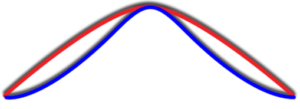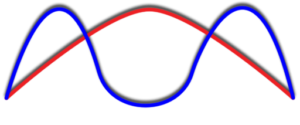Natural selection is defined as a process or a “force” that allows for organisms better adapted to their environment to better survive and produce more offspring. The theory of natural selection was first founded by Charles Darwin. The process of natural selection is important and is a driving force for evolution. For organisms to evolve, there needs to be differences in traits between organisms that provide certain advantages or disadvantages, and it is these traits that natural selection acts upon.
When it comes to natural selection, there are three different types of selection that can occur. These types include the following:
Stabilizing Selection
This type of natural selection occurs when there are selective pressures working against two extremes of a trait and therefore the intermediate or “middle” trait is selected for. If we look at a distribution of traits in the population, it is noticeable that a standard distribution is followed:

Example: For a plant, the plants that are very tall are exposed to more wind and are at risk of being blown over. The plants that are very short fail to get enough sunlight to prosper. Therefore, the plants that are a middle height between the two get both enough sunlight and protection from the wind.
Directional Selection
This type of natural selection occurs when selective pressures are working in favour of one extreme of a trait. Therefore when looking at a distribution of traits in a population, a graph tends to lean more to one side:

Example: Giraffes with the longest necks are able to reach more leaves to each. Selective pressures will work in the advantage of the longer neck giraffes and therefore the distribution of the trait within the population will shift towards the longer neck trait.
Disruptive Selection
This type of natural selection occurs when selective pressures are working in favour of the two extremes and against the intermediate trait. This type of selection is not as common. When looking at a trait distribution, there are two higher peaks on both ends with a minimum in the middle as such:

Example: An area that has black, white and grey bunnies contains both black and white rocks. Both the traits for white and black will be favored by natural selection since they both prove useful for camouflage. The intermediate trait of grey does not prove as useful and therefore selective pressures act against the trait.
SchoolTutoring Academy is the premier educational services company for K-12 and college students. We offer tutoring programs for students in K-12, AP classes, and college. To learn more about how we help parents and students in Hastings, Nebraska visit: Tutoring in Hastings, Nebraska.




